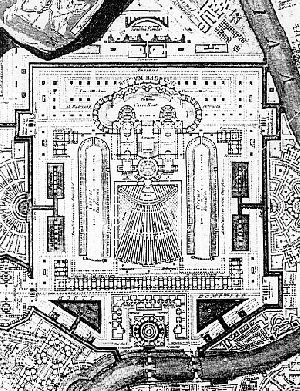quondam @ archinect/79/7907m.htm
History of Blobitecture
Rita Novel 2004.09.07 20:45
not exactly blob related, but a timely response nevertheless. even precursorish even, you might say...
4 September 1997 and today
2001.09.04 11:00
Architect Aldo Rossi died in a car crash 4 September 1997, exactly at a time when virtually all of the world was very aware of another car crash death, namely the death of the quondam Princess Diana, 31 August 1997. Although I did not learn of Rossi's death until a week or two after it happened, I nonetheless vividly remember something I did 4 September 1997, which was to unexpectedly find the essay "Passage to the City: The Intrepretive Function of the Roman Triumph" by Alan Plattus in Ritual (1983). Given the fact that I was then soon to see an actual reenactment of the ancient Triumphal Way via the televising of Diana's funeral 6 September 1997, this series of events has (for me at least) over time become more and more compounding (hence EPICENTRAL).
Four years ago tomorrow, 5 September 1997, was the death of Mother Teresa, and the present's 6 September will witness the memorial service for Steven Izenour at Irvine Auditorium on the University of Pennsylvania campus.
Sometime in 1998 I learned of the Eugene J. Johnson article "What Remains of Man -- Aldo Rossi's Modena Cemetery" in The Journal of the Society of Architectural Historians (March 1982), where Johnson adroitly demonstrates how Rossi's cemetery design closely compares with Piranesi's Bustum Hadriani as delineated within the Ichnographia of the Campo Marzio. What Johnson does not point out however, is that Rossi essentially reenacted the Ichnographia's axis of death which actually intersects the Ichnographia's demarcation of ancient Rome's Triumphal Way. [Piranesi's plan delineations of the intersection of the axis of death and the Triumphal Way themselves manifest a reenactment of the ancient Roman camp/urban planed crossing of a cardo and decumanus.] As it happens, Aldo Rossi was born 3 May 1931, and because of a suppressive act of Pope John XXIII in 1960, May 3 is now more correctly the quondam feast of the Finding of the Holy Cross.
Triumph via death is not exactly considered a modern theme, yet it is nonetheless still quite capable of being pervasive in modern times. Without much exaggeration, it is indeed possible to view Diana's funeral as a modern event of very, very late antiquity. In starting my day, today, I browsed through Butler's Lives Of The Saints, not something I do every day, but the book was (for good reason) next to my computer. I looked to see which Saints feast are celebrated today. One of them (surprisingly) is St. Rosalia, so just before 9 o'clock this morning I called my mother to wish her "Happy Namens Tag." [Although my mother now simply goes by the name Rosa Lauf, her original name is Rosalia Christina Brenner.] It was nice to make my mother happy, and I told her a little about St. Rosalia (c. 1160?, from Sicily, and how the 1624 discovery of her bones, and their subsequent procession in reliquary "stayed" the then plague in Palermo). Then my mother told me a "fun" story. The other night on the TV game shoe Jeopardy, the "answer" was "She is the mother of the Roman Emperor Constantine." The first two contestants to reply were incorrect, but the final contestant correctly asked "Who is Saint Helena?" My mother said Alex Trubek was much surprised that anyone knew the answer.
Steve Lauf

The complex of buildings in the center of Rossi's cemetery, however, is not found in the 19th century cemeteries of the Modena/Genoa type. That idea came from another source, Giovanii Battista Piranesi's reconstruction of the Campo Marzio in Rome, as he imagined it stood in late imperial times. In Piranesi's map, a large portion of the right bank of the Tiber is occupied by a group of funerary monuments dominated by the mausoleum of Hadrian, which we now know as Castel Sant'Angelo. Hadrian's tomb sits on a square base near the river. Beyond this square is a U-shaped group of buildings marked Sepulchra. They embrace the bottom of a fan-shaped structure designated by the word clitoporticus. At the apex of the fan sits a round building called Basilica. This Basilica is part of a group of monuments labeled Bustum Hadriani, designating the place where cremation occurs. The correspondence in general layout between the Piranesi and Rossi plans is too close to be accidental. Rossi, who knew this Piranesi work perfectly well (a fragment of it appears in Rossi's drawing The Analogous City, 1976), has lifted Piranesi's vision of an Imperial ancient city of the dead within the context of late-antiquity Rome, and placed it in the middle of a 19th-century cemetery plan.
|